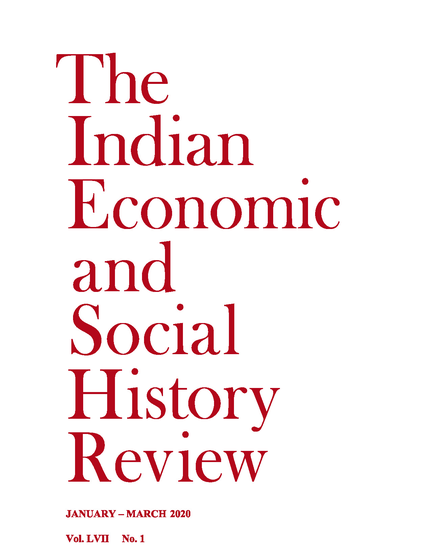
Article
Styles of Mastery of a Calcutta Brahman Family: Krishnachandra Ghoshal’s Pilgrimage to Gaya, Kashi and Prayag, 1769, in Vijayram Sen’s Tīrthamaṅgal
The Indian Economic and Social History Review
(2020)
Abstract
This article examines styles of mastery practised by a wealthy, managerial Brahman family in late eighteenth-century Bengal, when managerial Brahmans found new opportunities in association with the English East India Company. It is based on Tīrthamaṅgala by Vijayram Sen, a verse narrative of a pilgrimage in 1769, led by Krishnachandra Ghoshal for the purpose of performing the trayasthalī śrāddha in Gaya, Kashi and Prayag. Krishnachandra was the elder brother of Gokulchandra Ghoshal, who then was the chief banian of Governor Harry Verelst. The poem describes agencies that enabled the Ghoshals’ success and purposes that shaped their identity. It represents the family’s practices of accountancy, patronage and charity. It represents Krishnachandra’s self-control and control of others, his austerity and munificence in shraddha rites (obsequies), and his use of both Indo-Persian and Sanskrit codes of conduct in gift exchanges and formal conversations. In quite different settings, he used ‘pleasing conversations’ or discussions of knowledge in Sanskrit texts. Both kinds of formal conversation revealed the ‘character’ or ‘dignity’ of participants, and introduced them to important men whom they did not already know. Portraying agencies and purposes that were both this-worldly and spiritual, the poem does not categorically distinguish them. It does de-emphasise courtly aesthetics.
Keywords
- Managerial Brahmans
Disciplines
Publication Date
February 25, 2020
DOI
https://doi.org/10.1177/0019464619892893
Publisher Statement
Copyright © 2020 by Indian Economic and Social History Association
Citation Information
‘Styles of Mastery of a Calcutta Brahman Family: Krishnachandra Ghoshal’s Pilgrimage to Gaya, Kashi and Prayag, 1769, in Vijayram Sen’s Tīrthamaṅgal’, The Indian Economic and Social History Review 57, 1 (Jan.-March 2020), pp. 77-123
